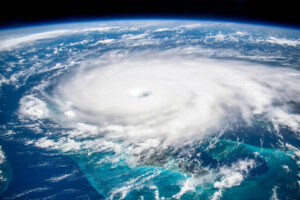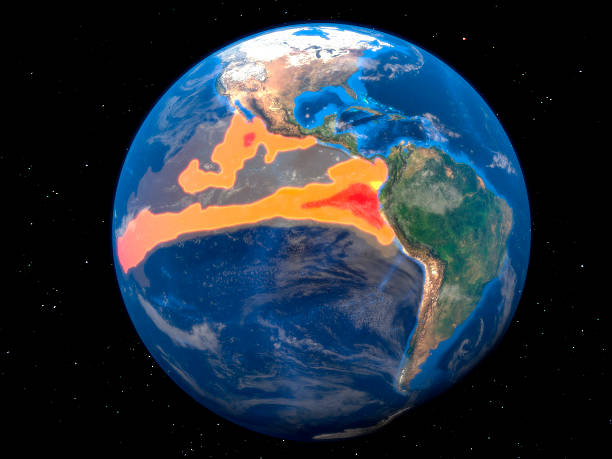INTRODUCTION:
El Nin El Nino: Understanding the Global Impact on Weather and Geography” Scientists, meteorologists, and geographers have all been captivated by the extraordinary climate phenomena known as El Nino for many years. It is a sophisticated weather pattern that develops in the equatorial Pacific Ocean and causes severe global weather system disruptions. We’ll delve into the complexities of El Nino in this blog post, including its origins, impacts on the weather and geography, and global repercussions.
What is EL NINO?
The erratic occurrence of El Nino in the equatorial Pacific Ocean has a big effect on weather patterns all across the world. It is characterized by an increase in sea surface temperatures in the central and eastern Pacific, which has a range of negative effects on the world’s climate. El Nino is a component of the El Nino-Southern Oscillation (ENSO), a more extensive climate oscillation that also includes its opposite, La Nina. The phrase “El Nino” was first used by fisherman who saw warm ocean currents typically around Christmas time. The phrase is native to Peru and Ecuador, where it means “the little boy” or “Christ child,” and it originally came from there.
Features of EL NINO
1. Trade Wind Weakening: Normally, the trade winds move warm surface waters toward the western Pacific by blowing from east to west along the equatorial Pacific. These trade winds, nevertheless, decrease or even reverse during an El Nino event, disrupting the regular patterns of oceanic circulation.
2. Ocean surface warming: As the trade winds deteriorate, warm surface waters that are typically located in the western Pacific begin to migrate eastward and gather near the South American shores. The effects of this heated water buildup may be extensive.
3. Weather Pattern Impact: A global shift in weather patterns may result from variations in sea surface temperatures and air circulation during an El Nino event. Changes in the frequency and intensity of tropical storms and hurricanes, droughts, floods, and altered rainfall distribution are only a few examples of these changes.
4. El Nino’s effects: Effect are not confined to the Pacific region, according to global climate teleconnections. A series of atmospheric and oceanic interactions that affect weather and climate around the world can be sparked by the warming of the tropical Pacific. Teleconnections is the term for this phenomenon.
5. Phase contrast: The opposite of ENSO, known as La Nina, is characterized by lower-than-average sea surface temperatures in the central and eastern Pacific. La Nina typically has disparate effects on weather patterns compered to EL NINO
The Basics of El Nino
Fishermen off the coast of South America who detected warm ocean currents around Christmas first identified El Nino, which translates to “the little boy” or “Christ child” in Spanish. It lasts for several months and happens infrequently, often once every two to seven years. The decrease of the typical easterly trade winds around the equator and the warming of surface waters in the central and eastern Pacific are at the core of El Nino.
The Role of Geography in El Nino’s Birth
El Nino’s growth is significantly influenced by geography. The expansive Pacific Ocean and its distinctive east-west orientation have an impact on wind patterns and ocean currents. In typical circumstances, the trade winds drive warm surface waters towards the western Pacific, which causes colder waters to upwell near the South American coast. But when there is an El Nino event, this pattern is broken, which sets off a complicated series of interactions between the atmosphere and the ocean.
El Nino’s Weather Effects

El Nino causes global weather patterns to shift, which has an effect on rainfall patterns. Droughts can occur in locations that typically receive a lot of rain, while unexpected floods can occur in parched regions. For instance, California saw tremendous rainfall and flooding during the 1997–1998 El Nino, yet severe droughts were experienced in some areas of Australia and Indonesia.
a. Tropical cyclones and hurricanes: In different parts of the world, El Nino can affect the frequency and strength of tropical cyclones and hurricanes. Although it increases the likelihood of cyclones in the Pacific, it tends to reduce hurricane activity in the Atlantic.
b. Wildfires and Heatwaves: Due to the dry conditions and elevated temperatures, some regions, such as Australia and Southeast Asia, may experience an increased danger of wildfires and heatwaves during El Nino episodes.
El Nino and LA NINA
The Effects of El Nino on Agriculture and Ecosystems
- Fisheries: El Nino has a big impact on marine life, particularly fish migration patterns and species abundance. Catch losses in several fishing enterprises cause economic difficulties for coastal communities.
- Agriculture: El Nino-related weather anomalies have a significant impact on agriculture. Changes in rainfall patterns can have an impact on crop yields, and in certain situations, entire harvests may be lost. This has effects on both the world’s food supply and commodity prices.
- Coral Reefs: The health and biodiversity of coral reefs all over the world are under danger due to the rising seas brought on by El Nino.

“Unraveling El Nino: Understanding the Global Impact on Weather and Geography”
Impact of El Nino on Global Climate
El Nino affects the entire global climate system and is not merely a regional weather phenomena. El Nino’s atmospheric disruptions have the potential to start a domino effect that leads to a progression of global climate abnormalities. Geographers and climatologists are both conducting extensive research on this complex teleconnection.
The Opposite of El Nino: La Nina
In the middle and eastern Pacific, La Nina, the antithesis of El Nino, is characterized by cooler-than-average sea surface temperatures. It has a unique set of climate effects that frequently contradict with those of El Nino. For a thorough understanding of the larger climatic oscillation known as the El Nino-Southern Oscillation (ENSO), understanding La Nina is essential.
Conclusion
El Nino is a fascinating and important weather phenomenon that has a considerable impact on ecosystems, human societies, and weather patterns all across the world. Policymakers, meteorologists, and geographers must comprehend it in order to plan for and respond to its effects. The dynamics of El Nino and its counterpart La Nina may change as climate change progresses, making it even more crucial to properly monitor and research these climate oscillations.
EL NINO
JODDI EL NINO POLLA
JODDI EL NINO
JODDI EL NINO
EL NINO EFFECT
EL NINO MEANING
WHAT IS EL NINO
EL NINO AND LA NINA




